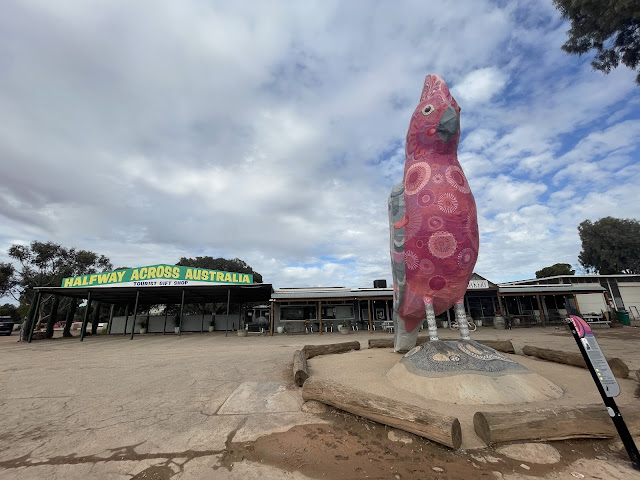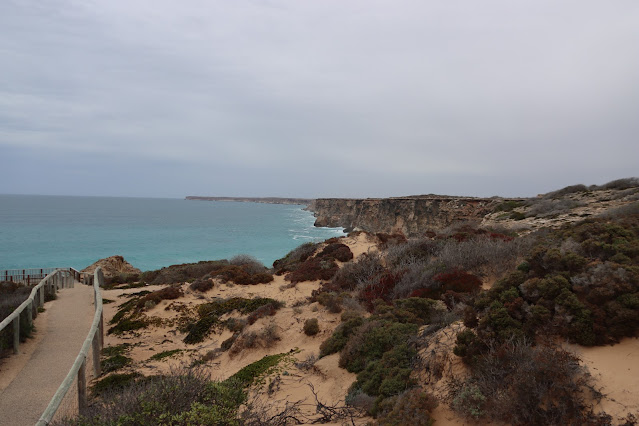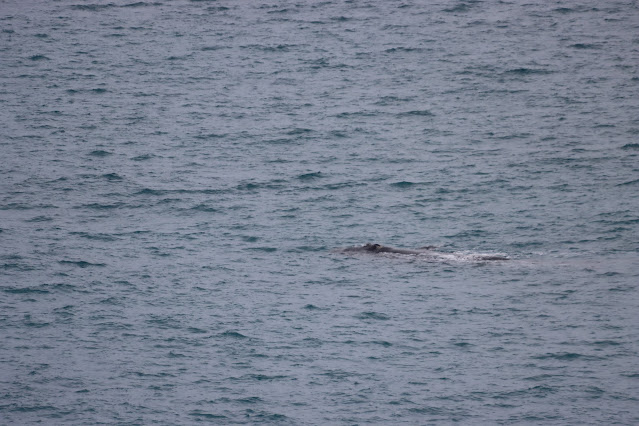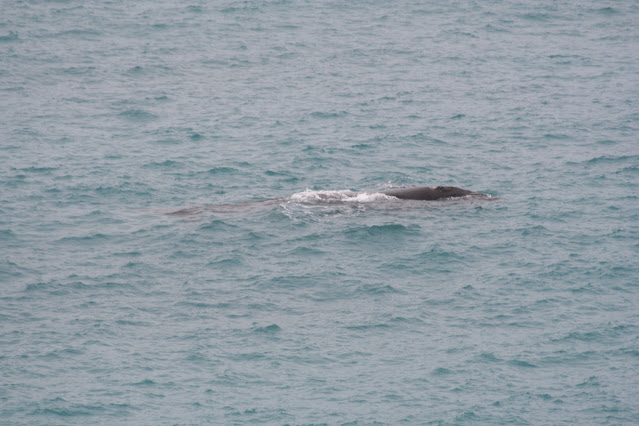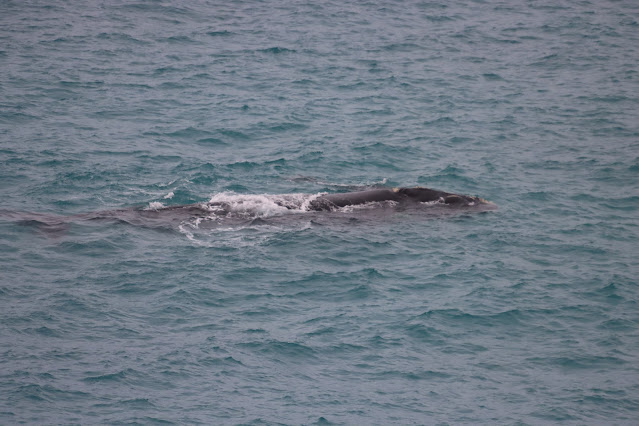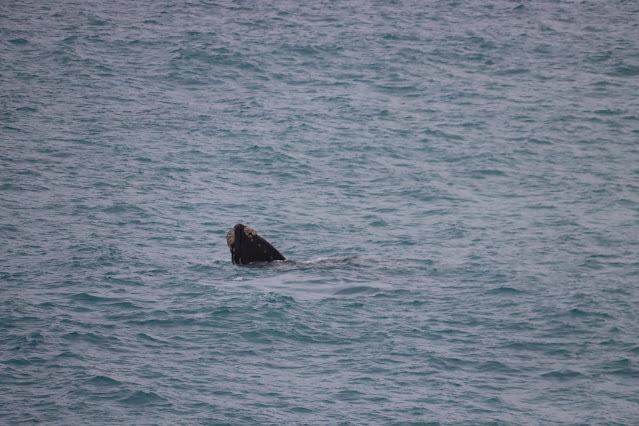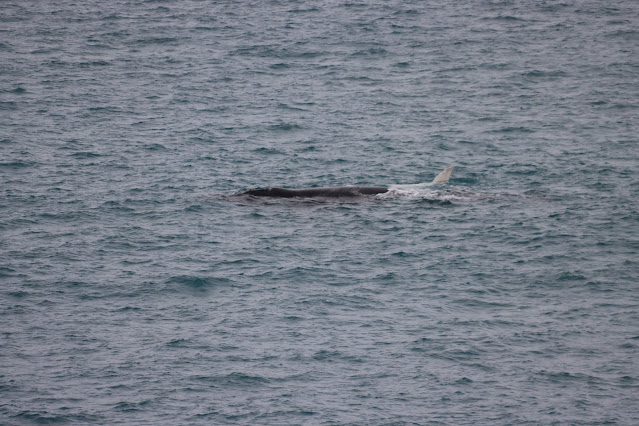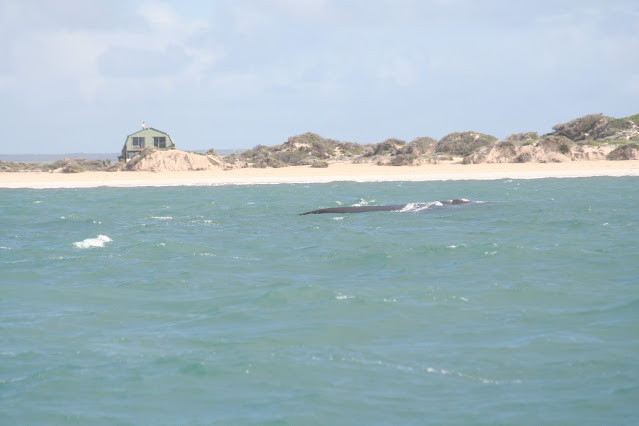One thing Kristine has been planning to do for ages is to travel to the Head of the Bight in winter to see the whales. Inevitably every year something has come up to stop her - Covid, Sweden travel, rugby etc - and so this year she decided it was happening. Tomas and Alana stayed home to look after Tony, and Cameron, Kris and I packed up before we headed to the Lions game on Saturday and were off early Sunday morning. It was a good chance for Cameron to get some driving hours towards his license, as it was 10-11 hours through, without stops (we had a few stops and made it in about 12hrs).
The Great Australian Bight is a bay that sits at the central south part of Australia, between Adelaide and Perth.
The main point of interest at the Head of the Bight is that is is where southern right whales come to calve in winter.
Southern Right Whales are baleen whales, meaning they have baleen plates in their mouths to filter food. This is the same type of whale as the humpback and the minke whale. The southern right whales live and feed in the waters off Antarctica and the females travel to the warmer waters in the Bight to calve.
The right whale was named because they provided a large amount of oil and blubber and were easy to hunt as they came in close to shore in protected bays. The North Atlantic right whale was almost hunted to extinction in 1750, so the American whalers moved south to Brazil and the Southern oceans. From 1800-1850 the southern right whale numbers dropped significantly and whaling was made illegal in 1936 to protect the numbers. The numbers have been slowly rising, and the whales returned to Fowlers Bay in the early 2000s.
Our trip started around 7:30 on Sunday morning and we headed north to our first stop at Port Wakefield, then on to Port Augusta. After a quick stop for lunch, and to refill with fuel, we continued on to Kimba.
Kimba is a marker point halfway across Australia from East Coast to West Coast and home to the Big Galah:
The Galah is 8m tall and was built in 1993. It is made of steel, chicken wire and fibreglass and took 18 months to build. We had previously visited in 2020 on our way to the Gawler Ranges, but the Galah has been repainted since then.
 |
| The Galah in 2020 |
The next morning we had a sleep in and then headed down to the Fowlers Bay jetty to check out the beach and sandhills:
 |
| Fowlers Bay |
There were apparently a few whales in the bay, but we couldn't see any from the shore, so we headed on to our next stop - The Head of the Bight, which was another 2 hours west.
The visitors center and cliff access cost us $20 each, but we had a great view of the 10 cow and calf pairs that we in the bay at the time:
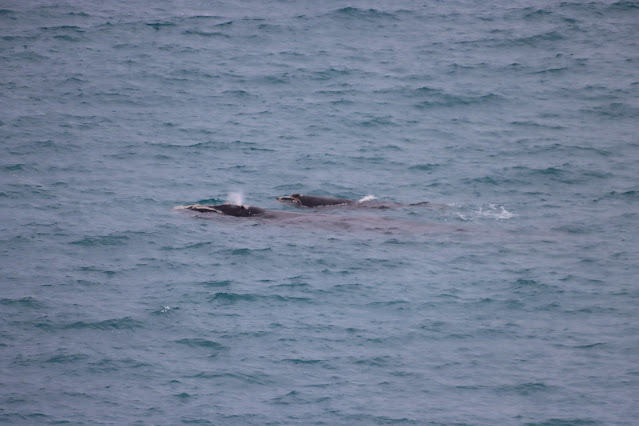 |
| Mum and Calf |
 |
| Back roll |
 |
| Mum with the calf circling it |
 |
| The tail of a southern right whale can weight around 2 tons |
One of the calves was white, these generally fade to gray as the whale ages:
We still had a few hours of daylight, so we headed another hour and a half down the road the the Nullarbor road house:
 |
| Petrol was $2.85 a liter! Compared to around $1.65 in Adelaide |
We got back to our camp after dark and had dinner before an early night. Unfortunately sleep wasn't going to be happening as it started to pour with rain and Cameron's swag got flooded out:
We bought him into the camper and rearranged everything, adding some tarps to the outside of the camper to keep the rain out. We had just settled back down when the winds picked up, with constant winds of 17 m/s with gusts that were must higher. We ended up needing to add pegs to the awning and move anything that could blow around, and then spent the night hunkered down listening to the camper taking a beating and hoping nothing broke.
We were supposed to stay one more night and had booked a boat tour the next day, but we decided that since everything was wet and the wind had pushed a pole through the seam of the annex, we would get up at first light and pack everything down.
 |
| It was much calmer the next day |
We had everything packed by 9:00 and went down to meet the whale watching tour boat at 9:30. Just as we were about to board and were standing on the exposed jetty, it started to pelt down with rain, soaking us all. The water was pretty rough so it made the boat trip pretty rocky, but we did get to see some whales in Fowlers Bay:
The tour lasted 2 hours, and then we had a warm shower, changed to dry clothes and started the drive home. The return trip was uneventful and we got home at midnight.
Despite the weather, we saw everything we planned to see and had a great short holiday.





